Our first stop today was to see the World’s Largest Kokopelli in Camp Verde:
So what is the Kokopelli? Since you asked :-)), here is information from the internet:
“Known as a fertility god, prankster, healer and storyteller, Kokopelli has been a source of wonder throughout the country for centuries. Kokopelli embodies the true American Southwest, and dates back over 3,000 years ago, when the first petroglyphs were carved. Although his true origins are unknown, this traveling, flute-playing Casanova is a sacred figure to many Southwestern Native Americans. Carvings of this hunch-backed flute-playing figure have been found painted and carved into rock walls and boulders throughout the Southwest.
There are many myths of the famous Kokopelli. One of which is that he traveled from village to village bringing the changing of winter to spring; melting the snow and bringing about rain for a successful harvest. It is also said that the hunch on his back depicted the sacks of seeds and songs he carried. Legend also has it that the flute playing also symbolized the transition of winter to spring. Kokopelli’s flute is said to be heard in the spring’s breeze, while bringing warmth. It is also said that he was the source of human conception. Legend has it; everyone in the village would sing and dance throughout the night when they heard Kokopelli play his flute. The next morning, every maiden in the village would be with child.
Whatever the true meaning of Kokopelli is, he has been a source of music making and dancing, and spreading joy to those around him. Even today, Kokopelli, with his hunchback and flute, is always welcome in our homes.”
So now we know – LOL!
Our next stop was Montezuma Castle National Monument:
So what is Montezuma Castle? Since you asked, here is information from the NPS site on the internet:
“Rising 100 feet above the Beaver Creek floodplain, Montezuma Castle is a testimony to the resilience and innovations of a people called the “Sinagua,” named after the Spanish term for the San Francisco Peaks, the “Sierra Sin Agua” — “the mountain without water.” Montezuma Castle is one of the best-preserved cliff dwellings in the United States. It is 90 percent original despite years of unauthorized excavation, visitation and even one attempt to blow apart a wall to collect artifacts.
Origins
Montezuma Castle was not an isolated structure where people lived generation after generation, having little contact with neighbors. The Castle instead was a small, but very dramatic, part of a large community of people spread up and down the waterways of the Verde Valley. As many as 6,000 to 8,000 people may have lived in the valley in small villages no more than two miles apart. Montezuma Castle is located along Beaver Creek, possibly a final leg in a major prehistoric trade route from northern Arizona. People following this trail were seeking copper, salt, cotton, argillite and other minerals.
The Castle
Montezuma Castle is built into a deep alcove with masonry rooms added in phases. A thick, substantial roof of sycamore beams, reeds, grasses and clay often served as the floor of the next room built on top. Entrance to most areas was usually from a hole in the roof; a ladder made access easier. The 19 rooms could have housed 35 to 50 people, conserving precious farmland near the creek. Around the corner was “Castle A,” a site with 45 to 50 rooms that also hugged the limestone cliff. These people were certainly related, sharing food, land, friendships; all ties that bind a community. There is little evidence of conflict or warfare but perhaps people felt more secure living in the Castle. The series of ladders used to climb to the site could be pulled in for the night and there is a panoramic view of the river and valley from the top parapet level. A small ruin above the Castle, on the top of the cliff, allows views of the entire countryside; a sentry would have advance warning of anyone entering the area. Just as important — the Castle is simply a wonderful place to live in all seasons. It is cool in the summer and warm in the winter. The higher elevation gives some relief from biting mosquitoes, juniper gnats and other pesky vermin. Daily activities, such as processing food, were done on the roof, and most areas have an inspiring creek front view!
Moving Away
Starting around 1380 to 1400, the Sinagua began moving from the area, probably joining relatives in large pueblos to the east. As more explanations are offered for their departure, more questions arise. Stress factors may have included prolonged drought, disease, and nutrient-depleted soil from growing corn. The departure from Montezuma Castle and surrounding ancestral lands had to have been very emotional. The ties to the land were over centuries and generations — the decision to leave could only have been out of necessity.
The “Halls of Montezuma”
In 1874, some of the first Euro-American explorers to see Montezuma Castle were veterans of the Mexican-American War (1846–1848). When they entered the Verde Valley and saw the great cliff dwellings and large pueblos with standing walls, they didn’t believe the local indigenous people had the knowledge or ability to construct such imposing structures, and so attributed them to the Aztecs, whose magnificent ruins they had seen in Mexico. A popular Marine marching song of the time referred to the “Halls of Montezuma,” or, Mexico City, center of the Aztec world. Inspired, the veterans felt the Aztec king had to have been somehow involved! Once Montezuma Castle was recorded on early maps, the name was accepted. When Fort Verde was established to subdue and round up the Yavapai and Apache people, a popular outing for officers and enlisted men was to visit “The Castle.” Depending on the perspective, the Castle was either a site to preserve—or a treasure chest full of curiosities to take home. Very few original artifacts remained in 1906 when President Teddy Roosevelt declared Montezuma Castle a National Monument, but protection of the structure for future generations was assured. In 1933, “Castle A” was excavated, uncovering a wealth of information and artifacts that expanded our knowledge of the Sinagua. The Visitor Center displays at Tuzigoot and Montezuma Castle showcase this culture; a legacy that did not disappear but is still alive with the Pueblo people of today.”
What a fascinating place!
The darker area of the castle in the above picture was the area that was remudded a few years ago to stabilize it. This work was done by the local Hopi Indians in order to be done correctly.
This is part of Castle A:
The river in front of the castle:
The area between the castle and the river. This area was used heavily by the Sinagua as a social area and farming area.
Since visitors are no longer allowed into the site, a replica has been constructed. There was an audio program that went with this that explained each floor and its use.
We took in one of the ranger programs on the use of the Yucca plant by the Sanagua. We watched as she prepared a yucca leaf into fibers and then into rope – WOW!
The museum contained a lot of interesting info also. The one that stood out for me was their weaving technique and the materials they used. There were some of those “artifacts” on display – think about this – That clothing and purse are over 700 years old!!! (I wish my favorite jeans would have lasted more than 2 years – :-)))
And more cacti blooming:
On the way home, we checked out some BLM lands that are outside of Cottonwood and allow 14 day free camping. It is a nice area and we will put it in our list of places to stay.
This evening we met Pete and Carolyn for dinner at the Legion and had a wonderful time – laughing, telling stories and getting caught up. A great time!
AHHHH, Another wonderful day in paradise!



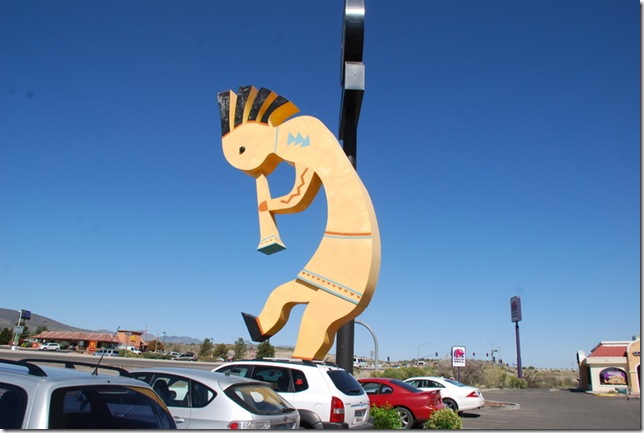
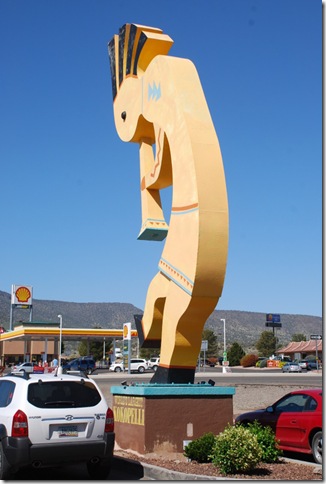
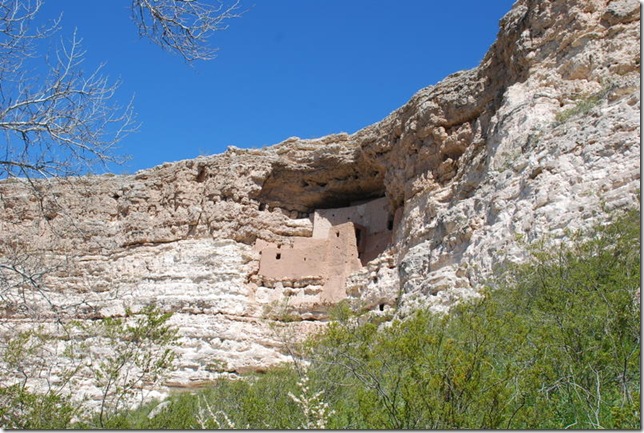
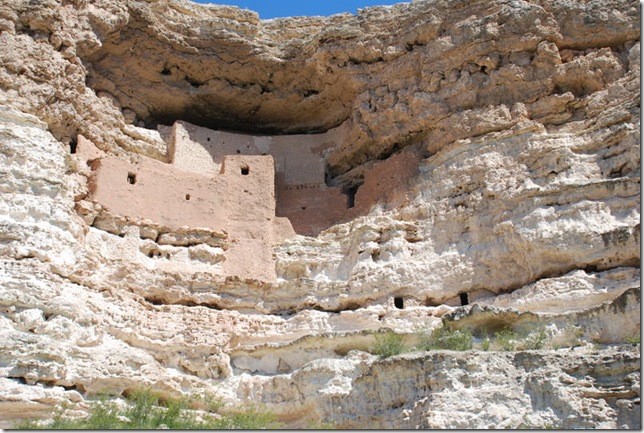
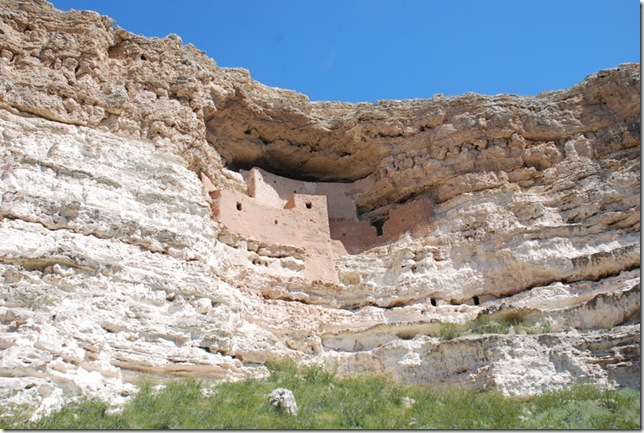
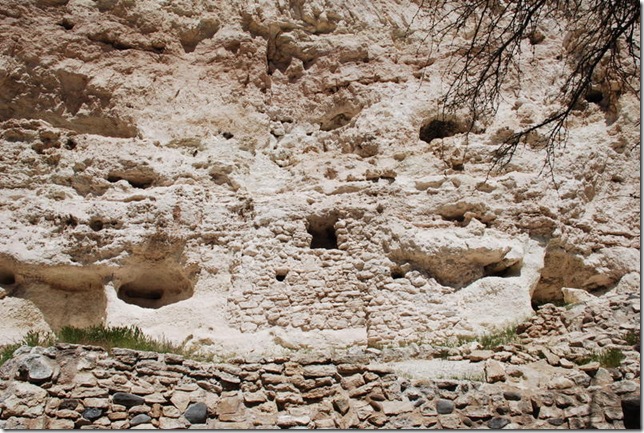
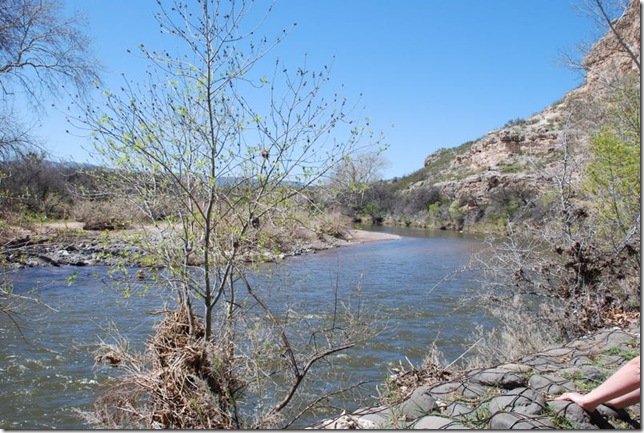
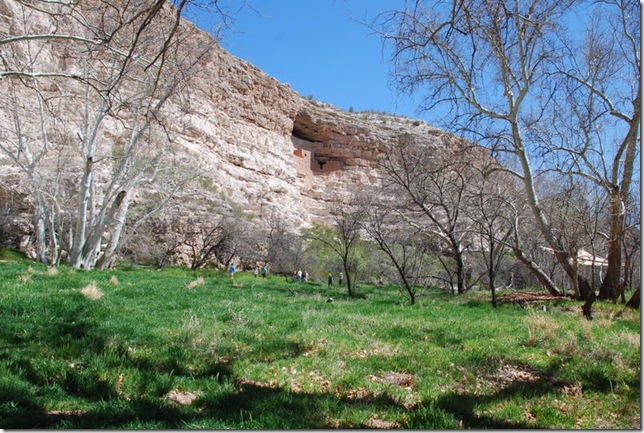
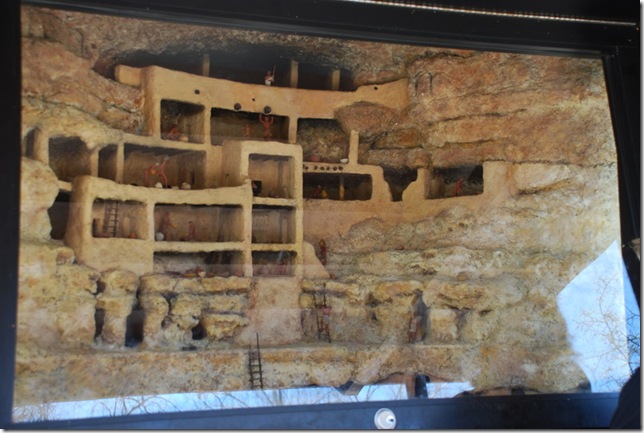
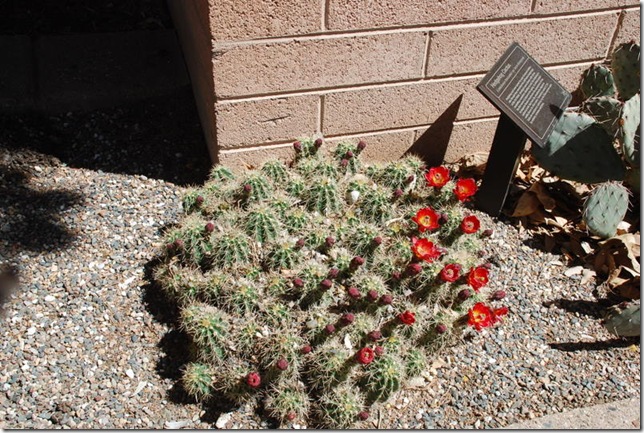
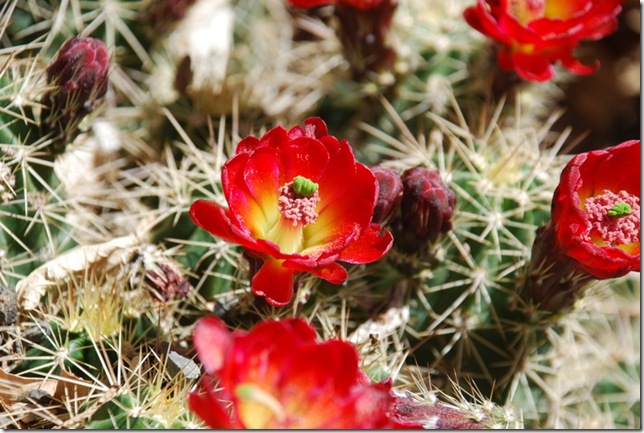


2 comments:
Did you know the original Kokopelli had a very well developed fertility tool that he was rumoured to use quite liberally with the village maidens. Also he supposedly came around when the men were out warring or hunting!!
Just another version
Hi Lynn,
There was a lot of VERY INTERESTING info about him on the internet..he liked the women and maidens - LOL!
Post a Comment